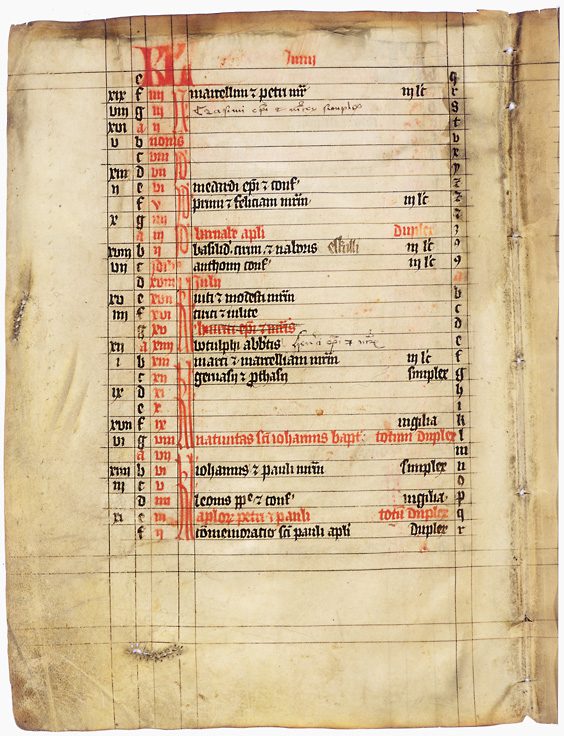The first peer-reviewed publication associated with EModGraL is out!
In ‘Multimodal and Multilingual Practices in Late Medieval English Calendars’, Matti Peikola and Mari-Liisa Varila examine a selection of late medieval (ca. 1300–1550) manuscript calendars.

Calendars were a specific type of table that was perhaps the most familiar to late medieval readers. They provided information about saints’ days and other liturgical feasts but also contained a variety of other kinds of information, often in a highly condensed form.
In their study, Peikola & Varila found differences between the contents and presentation of calendars in religious manuscripts vs those in e.g. astro-medical manuscripts. They suggest that these may be viewed as distinct subgenres, although they also found hybrids. Language choices reflected genre conventions and specialised functions, and calendars produced in the latter half of the period studied were more likely to be multilingual. Finally, the authors note that the potential influences of print technology on the generic properties of calendars should be examined in the future. This study is currently under preparation.
Peikola Matti & Mari-Liisa Varila. “Multimodal and Multilingual Practices in Late Medieval English Calendars”. In Multilingualism from Manuscript to 3D: Intersections of modalities from medieval to modern times, edited by Matylda Włodarczyk, Jukka Tyrkkö & Elżbieta Adamczyk, 93-118. New York: Routledge, 2023. DOI: 10.4324/9781003166634-6. (Open access)